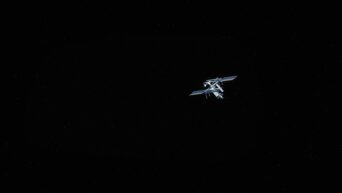
Credit: Unsplash
The ice-cold planet was discovered with a radio telescope.
Most stars out there in the big dark emit tracible heat signatures. Even if they’re far away, with a powerful infrared scope, you can still pick up the waves they’re giving off. But what are you supposed to do when a celestial object is too cold to track with a infrared scope? Simple, you search with a radio telescope.
Researchers from the University of Hawai’i caught the faint signal of a brown dwarf star utilizing a Low-Frequency Array radio telescope, or “LOWFAR.” See, brown dwarf stars, also known as “super-planets” or “failed stars,” are a bit of an anomaly; they’re too small to be considered a proper star like our Sun, but they’re also too big to be considered a planet. This happens because these stars don’t undergo the same kind of nuclear fission that powers a proper star, so compared to them, it’s too cold and dim to pick up with a traditional infrared scope. However, brown dwarf stars do still give off light, albeit on the radio spectrum. This is how the LOWFAR scope was able to spot it.
This new brown dwarf, coded BDR J1750+3809, or just “Elegast” if you’re in a rush, is the very first substellar object to be spotted with a radio telescope, opening up a new frontier of scouring outer space.
“This work opens a whole new method to finding the coldest objects floating in the sun’s vicinity, which would otherwise be too faint to discover with the methods used for the past 25 years,” Michael Liu, coauthor of the study and researcher from the the University of Hawai’i Institute for Astronomy, said in a public statement.
“We asked ourselves, ‘Why point our radio telescope at catalogued brown dwarfs?'” Harish Vedantham, lead author of the study and astronomer from the Netherlands Institute for Radio Astronomy (ASTRON), added. “Let’s just make a large image of the sky and discover these objects directly in the radio.”
































